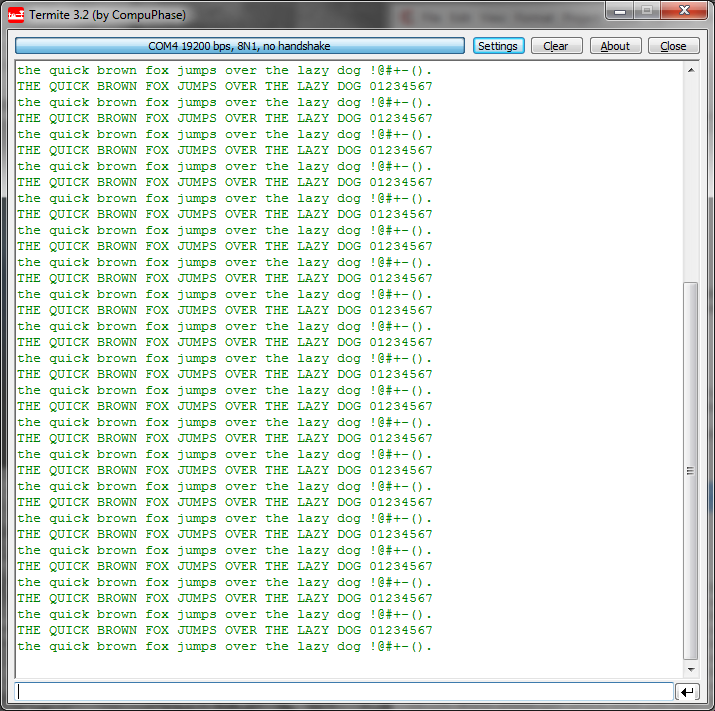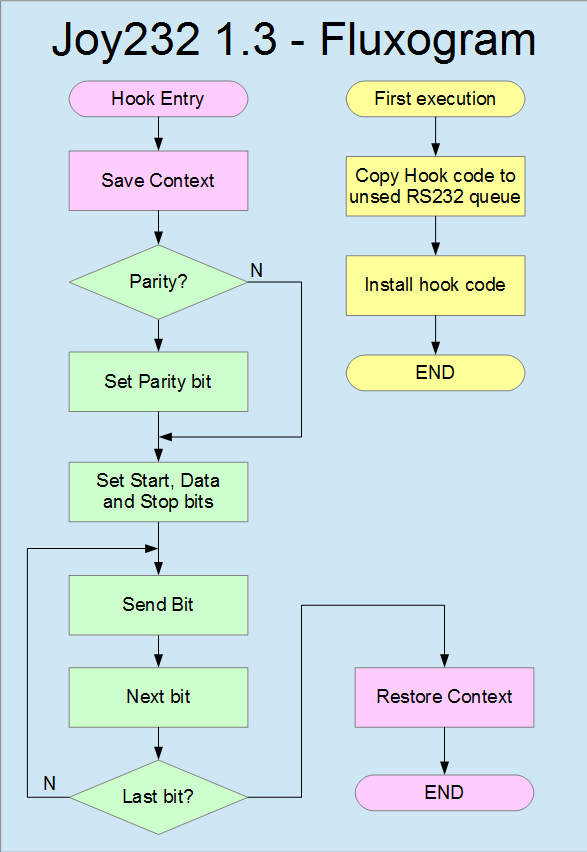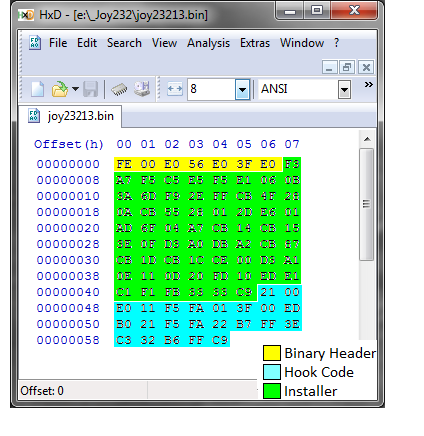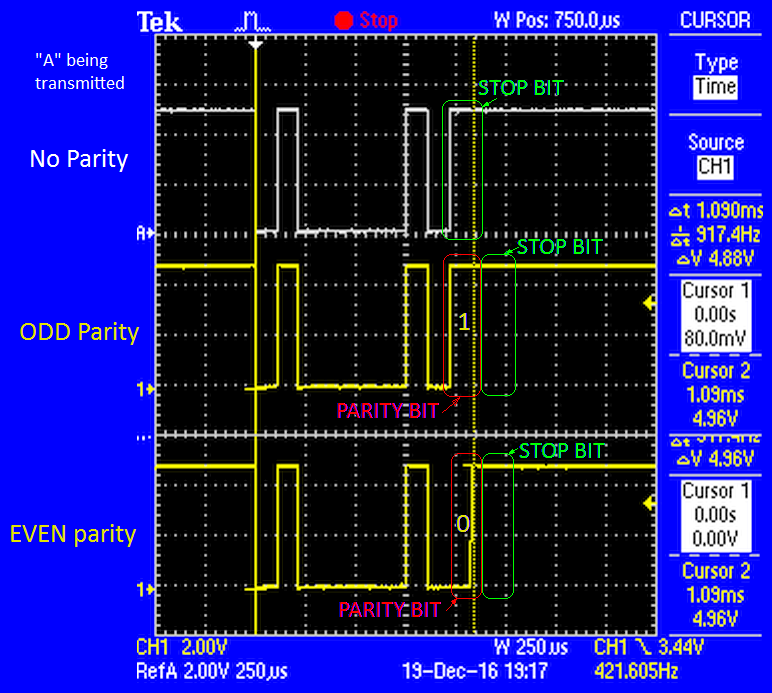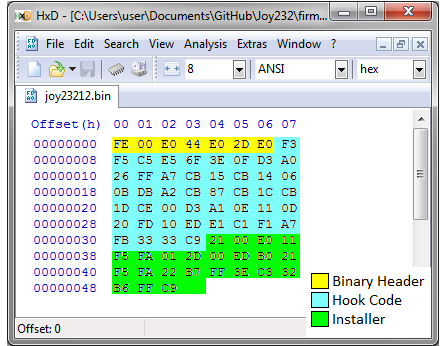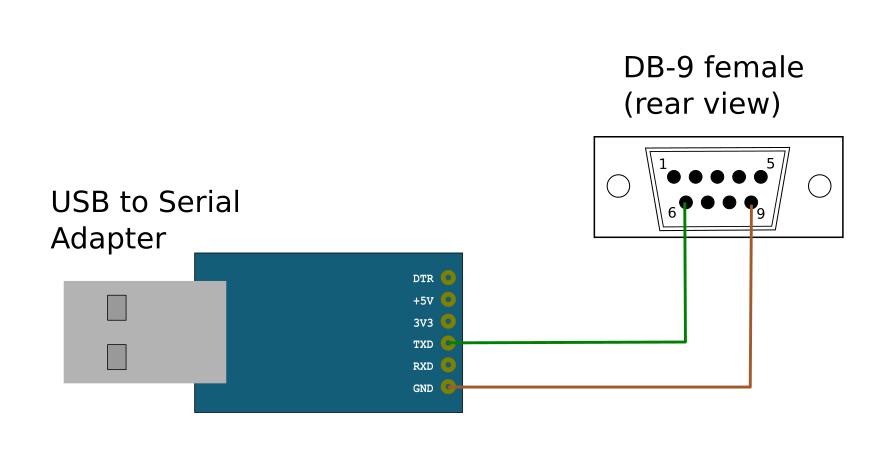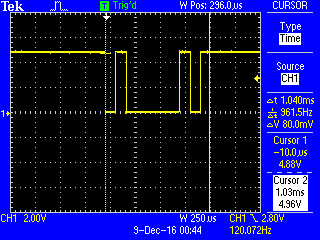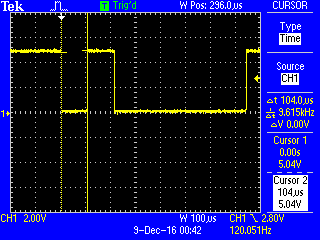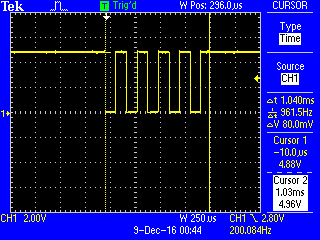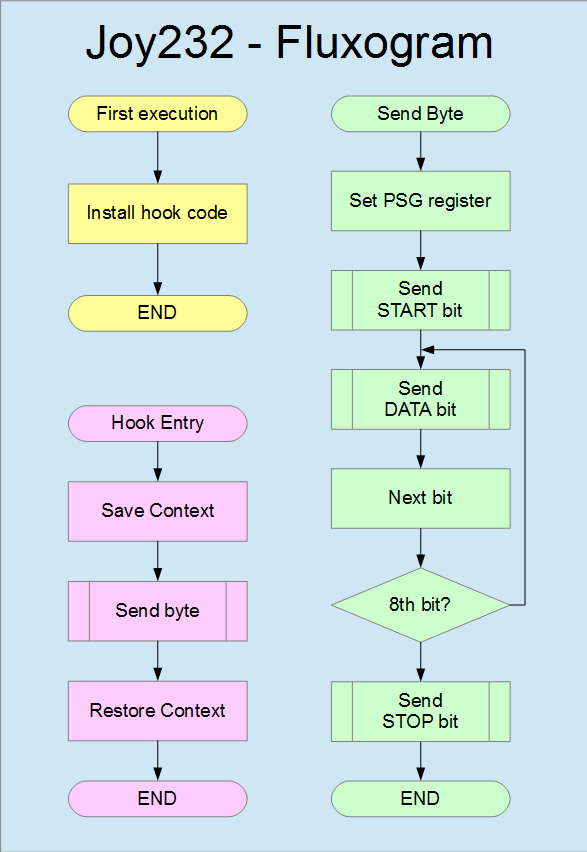-
Complete BASIC program
12/20/2016 at 00:43 • 0 commentsI have wrote a complete BASIC program for loading the hook code using the MSX and used "LLIST" command to transfer the program to the PC using the hook code itself.
This version was named "complete" because it has instructions on how to change the baudrate and how to use parity
10 REM 20 REM Joy232 hook code 30 REM danjovic 2016 40 REM version 1.31 19/12/2016 50 REM 60 EI=&HFAF5:SIZE=63 70 FOR A = EI TO EI+SIZE 80 READ B$: POKE A,VAL("&H"+B$) 90 NEXT A 100 REM 110 POKE &HFFB8,&HFA 120 POKE &HFFB7,&HF5 130 POKE &HFFB6,&HC3 140 REM 150 DATA F3,F5,C5,E5,6F,3E,0F,D3 160 DATA A0,26,FF,A7,CB,15,CB,14 170 DATA 06,0B,DB,A2,CB,87,CB,1C 180 DATA CB,1D,CE,00,D3,A1,0E,11 190 DATA 0D,20,FD,10,ED,E1,C1,F1 200 DATA A7,FB,33,33,C9,CE,00,D3 210 DATA A1,0E,06,0D,20,FD,10,ED 220 DATA E1,C1,F1,FB,33,33,C9,00 230 REM 240 REM To change baudrate 250 REM 260 REM POKE &HFB27,value 270 REM 280 REM Baudrate value 290 REM 1200 170 300 REM 2400 83 310 REM 4800 39 320 REM 9600 17 330 REM 14400 10 340 REM 19200 6 350 REM 360 REM ---------------------- 370 REM To use parity 380 REM 390 REM POKE &HF96D,value 400 REM 410 REM Parity value 420 REM NONE 0 (or 1) 430 REM EVEN 2 440 REM ODD 3 -
Testing the baudrates
12/19/2016 at 23:55 • 0 commentsI have used a BASIC program to test the baudrates.
10 REM test transmission baudrates 20 BDR = &HFB27 30 REM Baudrate Value 40 REM 1200 170 50 REM 2400 83 60 REM 4800 39 70 REM 9600 17 80 REM 14400 10 90 REM 19200 6 100 REM 110 POKE(BDR),17 120 LPRINT "THE QUICK BROWN FOX JUMPS OVER THE LAZY DOG 01234567" 130 LPRINT "the quick brown fox jumps over the lazy dog !@#+-()." 140 GOTO 120
The code worked in all speeds with the given values for the delay loop. but I have tested some values around and verified that above 9600 bauds such value is very critical.![]()
-
New fluxogram
12/19/2016 at 23:07 • 0 commentsNew fluxogram to reflect the last version of the code. The colors from latter fluxogram have been kept to ease the comparison.
![]()
-
In Soviet Russia.... BIOS uses your software.
12/19/2016 at 22:39 • 0 commentsThis post is to remember the contest judges that my code does not use the BIOS from MSX computers to print the character, but the opposite! BIOS use my software.
I may use BIOS to load the code to memory but this is the same circumstance of the Arduino or the Parallax bootloader :)
Spasiba!
-
Added parity control
12/19/2016 at 22:19 • 0 commentsAdded configurable parity control. Parity can be NONE, EVEN or ODD, selectable by contents of address 0F96DH which RS232 Queue Putback flag that is not used by MSX BIOS.
The hook code size is 63 bytes and can still fit within unused RS232 Queue space (64 bytes). The entire binary takes 93 bytes.![]()
Parity was checked using oscilloscope and a BASIC program .
10 REM test transmission with parity 20 CNF = &HF96D 30 REM 40 REM 0/1: no parity (N) 50 REM 2: even parity (E) 60 REM 3: odd parity (O) 70 REM 80 POKE(CNF),2 90 LPRINT "A"; 100 GOTO 90
![]()
-
Code profile
12/13/2016 at 04:44 • 0 commentsThe enhanced code takes only 75 bytes, from which 7 are the binary header file, 23 are for transfering the hook code to the unused RS232 queue. The hook code itself takes only 44 bytes.
![]()
-
Further enhancement
12/12/2016 at 20:37 • 0 commentsAfter optimization the size of the loadable binary file shrinked to only 65 bytes being 7 for the file header, 14 for hook code installer and 44 for the hook code itself which is small enough to fit whithin the unused 64 bytes reserved for the rs232 queue in 'system variables' area.
; ; Install bitbang routine on printer HOOK ; Borrowed from the book "+50 dicas para o MSX" ; HLPT: EQU 0FFB6H ; Printer hook entry RS2IQ: EQU 0FAF5H ; RS232 queue, 64 bytes ; INSTALL: LD HL, HOOK_PRNTJ232 ; beginning of hook code LD DE, RS2IQ ; destiny, unused rs232 queue LD BC, HOOK_END-HOOK_PRNTJ232 ; block size LDIR ; transfer hook code to its new location LD HL,RS2IQ ; Write the execution entry point for printer hook LD [HLPT+1],HL LD A,0C3H ; then write the CALL instruction (0xC3) LD [HLPT],A RET
The downside is that now we need 10 extra bytes of instructions to move the hook code from the load address to the rs232 queue area. Another necessary modification was on the bit delay loop which used an absolute address jump to simplify the timing (JP NZ,xxxx takes 11 cycles either jump or no jump) . It was replaced by a relative jump (JR NZ,xxxx) .
; delay 1 bit time LD C,T9600 ; 8 8 poke here to change the baud rate DELAY_C: DEC C ; ( 5) JR NZ,DELAY_C ; (12)(/7) ; (12+5)*(TDelay-1)+(7+5) = 17*TDelay - 17 + 12 = (17*Tdelay-5) DJNZ SEND_BITS ; 14(/9) send next bitThe relative jump made the hook code relocatable (now it can be copied and executed from wherever address) and the new timing due to the relative jump ended by enhancing the error rate for 14400 and 19200 baud are now both under 2% of error (it was not intentional though).
Clock = 3.575611 MHz Baud Tdelay Cycles RealRate Error % 1200 170 2971 1203,50 0,29 2400 83 1492 2396,52 -0,14 4800 39 744 4805,92 0,12 9600 17 370 9663,81 0,66 14400 10 251 14245,4 -1,07 19200 6 183 19538,8 1,76I could have loaded the hook code directly in the rs232 queue along with the installation code (14+44 bytes) , but I am planning to use the remaining 20 bytes to allow extra stuff like parity.
-
Squeezing the code because 85 bytes is too many...
12/10/2016 at 14:17 • 0 commentsI have started to squeeze the hook code. This can be done by merging the start, stop and data bits into a 16 bit register and use the same loop to transmit all the bits from the RS232 character (i.e. 10 bits). It also has a positive side effect that now all the bits will last exactly the same time (the stop bit may linger but it doesn't really matter as long as it takes at least 1 bit time.
Then the bitbang code turns into:
SND232: ; Inputs: ; L: Byte to be sent ; ; Changes: AF, BC, HL ; Select PSG Register 15 LD A,15 OUT [PSGAD],A ; Prepare stream of bits LD H,255; Add stop bits AND A ; clear carry flag RL L ; Add start bit and send 7th bit to carry RL H ; Send 7th bit to H register ; HL register is now ; ------------ H ----------- ----------- L --------- ; 16 15 14 13 12 11 10 9 8 7 6 5 4 3 2 1 0 ; 1 1 1 1 1 1 1 stp b7 b6 b5 b4 b3 b2 b1 b0 start ; Now loop through 10 bits [1 extra to compensate time at the end of the loop] LD B,10+1 ; poke here with 12 to send two stop bits instead of only one SEND_BITS: ; prepare mask ; Cycles Accumul IN A,[PSGRD] ; 14 24 save the present state of the bits from PSG register 15 RES 0,A ; 10 clear bit 0 ; 16 bit rotate RR H ; 10 20 H.0->Cy (bit 0 from H goes to carry) RR L ; 10 Cy->L.7, L.0->Cy ; set TXD line state ADC A,0 ; 8 20 A.0 now equals Cy OUT [PSGWR],A ; 12 write bit to output. Here starts the cycle counting ; delay 1 bit time LD C,_DLY ; 8 8 poke here to change the cycle count DELAY_C: DEC C ; ( 5) JP NZ DELAY_C ; (11) ; 16*_DLY DJNZ SEND_BITS ; 14(/9) send next bit ;Total: 8 + 16*_DLY + 24 + 20 + 20 from Start bit to beginning of stop bit ; 72 +16*_DLY cycles ; ; after the last bit we have: 8 + 16*_DLY + 9 ; 17 + 16*_DLY ; ; we're missing 72-17 = 55 cycles that's why we added 1 to ensure that ; at least 1 stop bit time has passed before we return RET -
Test of cleanup code
12/09/2016 at 19:50 • 0 commentsThe USB to serial adapters are now more common than computers with real serial ports and it makes the interface between the MSX and the PC far easier. It takes only the USB-Serial adapter and the DB-9 female connector.
![]()
The code have been cleaned up to remove some useless instructions and now takes 85 bytes including the 7 header bytes for binary type files, but it can be loaded with a BASIC program as well.
The video below shows the code running after being typed from BASIC prompt.
The wafeforms below shows the character "A" (0x41) being transmitted at 9600 baud.
![]()
![]()
The next waveform shows the character "U" (0x55) being transmitted.
![]()
The second video shows the code being loaded from a binary file. An application test was written to read the memory locations where the code sits in and print them as hexadecimal values.
-
Cleanup and repository
11/26/2016 at 15:12 • 0 commentsI have made a cleanup in the code, eliminating the selection of the multiplex for PORTB which was useless for only writing to the joystick ports.
Restructured (slightly) the code by moving the instructions that select PSG register to the subroutine where they are used. Now the structure of the program follows the diagram below.
![]()
 danjovic
danjovic